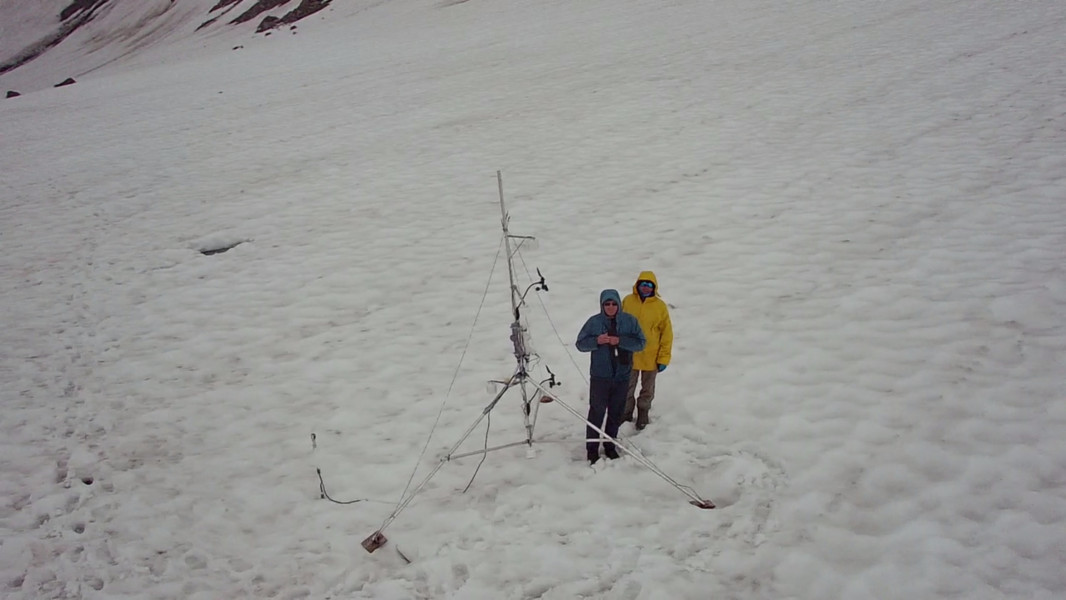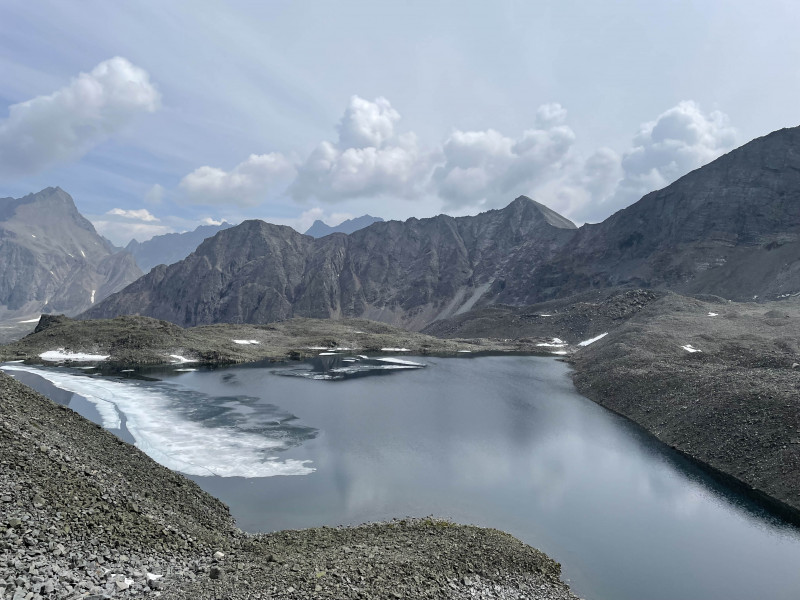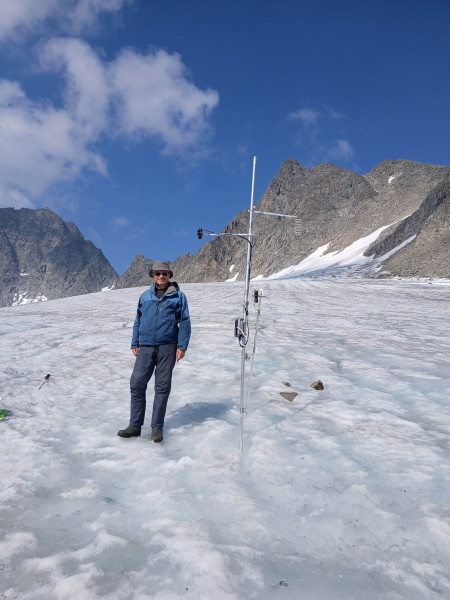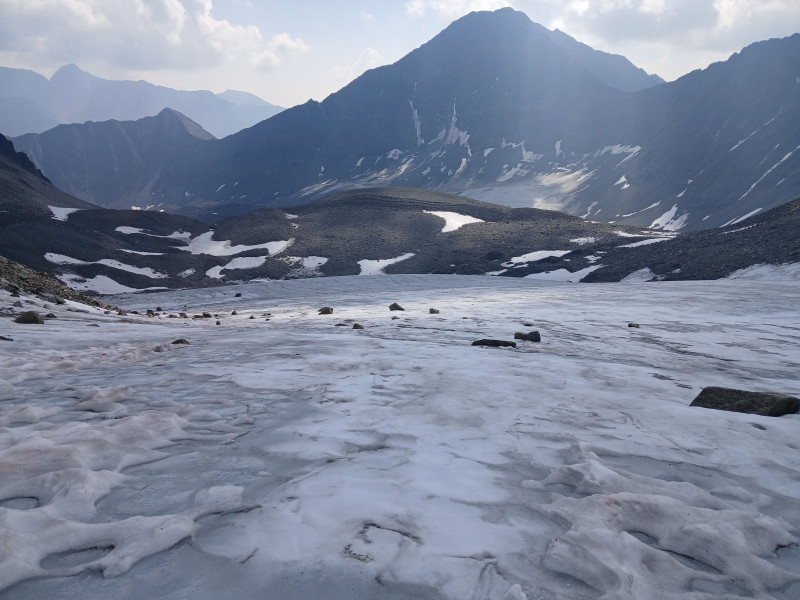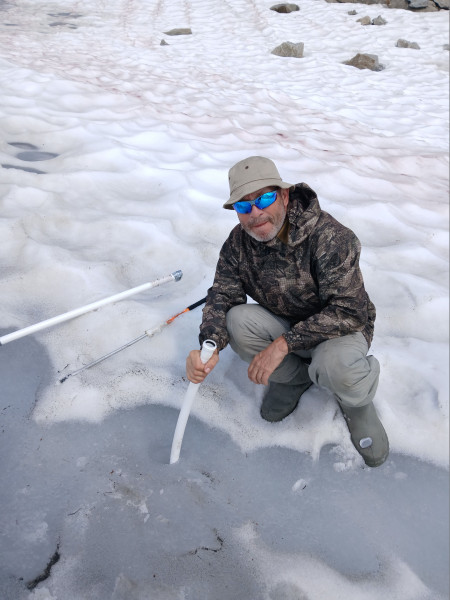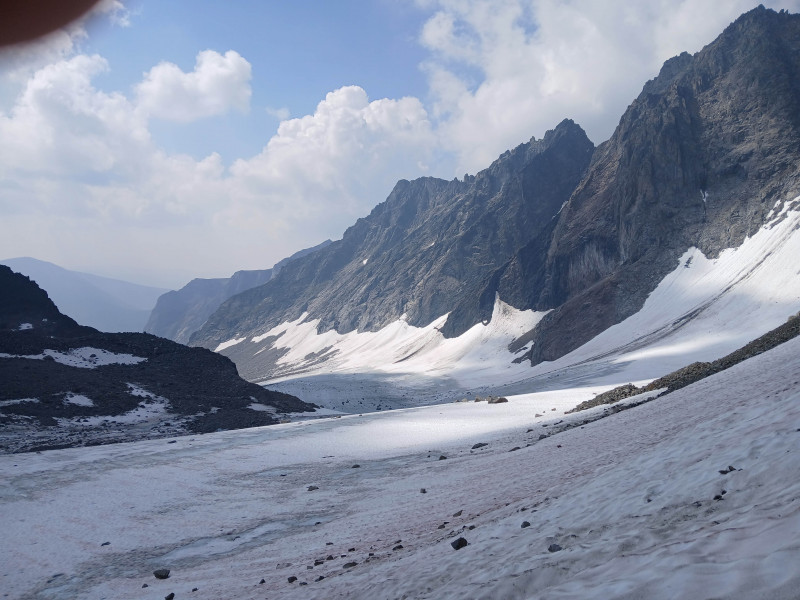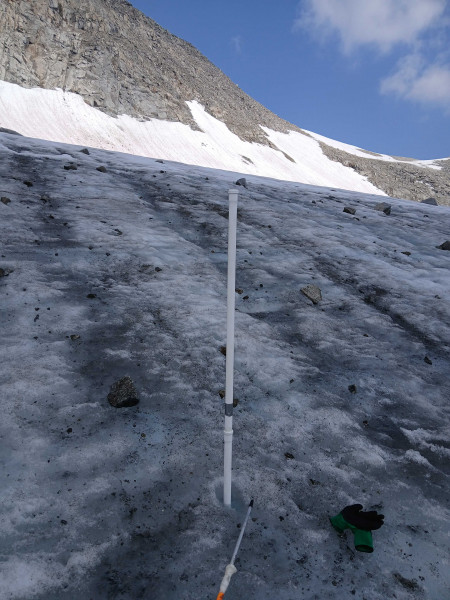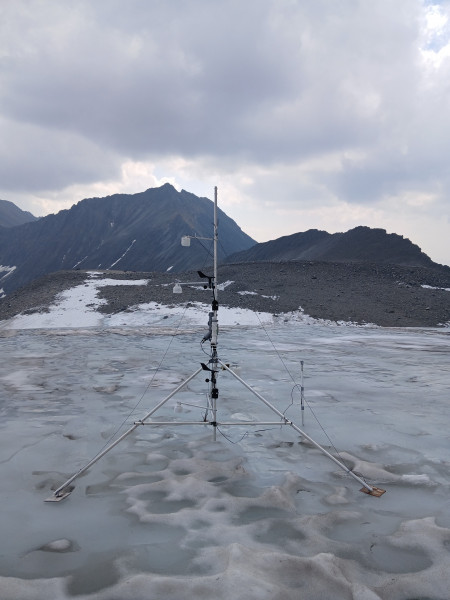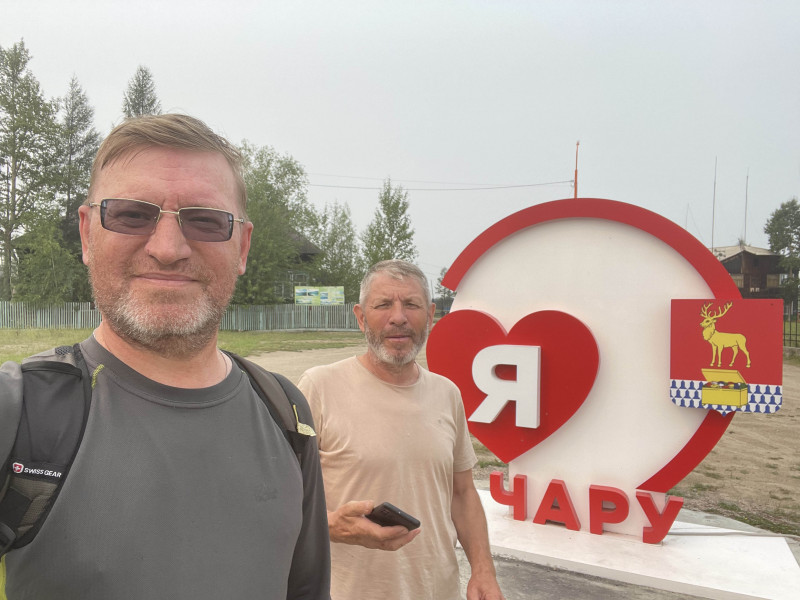Expedition to the glacier region of the central part of the Kodar Ridge, on July 13-29, 2024
The works were carried out within the project of the Russian Scientific Fund No. 24-27-00165 “Glacioclimatic modelling of the glaciation of the Kodar Ridge” (led by Osipov E.Yu.).
The aim of the expedition was to conduct comprehensive glaciological and meteorological studies of the Sygyktinsky Glacier – the largest transection glacier on the Kodar Ridge (located in two river basins: Syulban and Levaya Sygykta).
During the expedition, mass-balance observations were carried out on the glacier. Fieldwork was carried out on a 200 x 200 m polygon in the central part of the glacier (regular grid of 121 points), as well as along the centreline of Irkutsk branch of the glacier. The thickness of the snow cover, the density of the snow and the underlying ice were measured during the snow survey. Daily ablation rates were measured using ablation stakes, a thermistor chain, and an ultrasound sensor. Based on the results of mass-balance measurements on the Sygyktinsky Glacier, the unmelted winter snowpack will be quantified, a map of its thickness will be constructed, and the summer ablation rate and its spatial variability will be measured.
Two automatic weather stations were installed on the Sygyktinsky Glacier at altitudes of 2561 and 2485 meters. Both stations continuously measure standard meteorological parameters (temperature, humidity, radiation flows) and glacier melt rates with high resolution. Meteorological data obtained on the glacier will be used to calculate the heat balance of the glacier as well as to build a spatially distributed model of the Kodar Glacier melting under different combinations of meteorological parameters (synoptic situations). The time series on the Glacier already covers 6 ablation seasons (2019-2024). High-resolution time series of meteorological parameters were obtained at a meteorological station located on the terminal moraine of the glacier covering the last 5 full years (2019–2024).
During the expedition, reconnaissance studies were also carried out on the Bobina corrie-valley glacier in the basin of the Verkhny Sakukan River. They included the measurement of morphometric parameters of the glacier, its photosurvey, and GPS profiling. On the basis of the results of the analysis of the obtained data, the Bobina glacier can be selected as an object for the glaciological monitoring.




